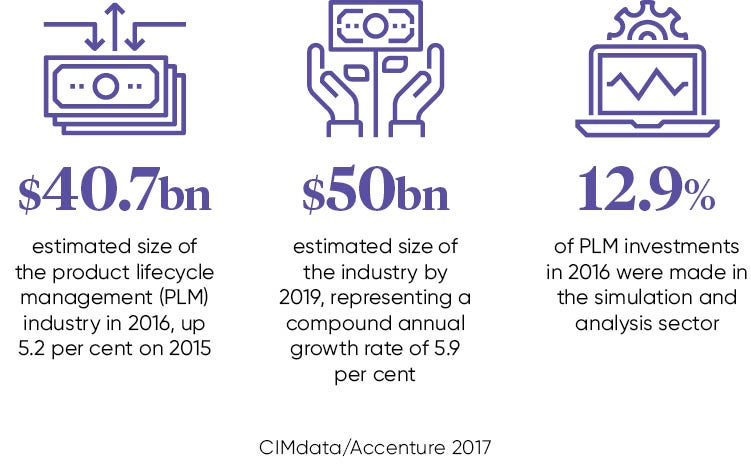In the 1980s and 90s, product lifecycle management or PLM was confined to engineers in white coats tucked away in the great halls of heavy industry, toiling over tolerances and computer-aided design, perfecting oily machinery. Fast forward and today this discipline has been utterly transformed.
Fuelled by affordable, high-grade computing power and emerging technology, PLM has flown from its traditional roost. Sales, operations and customer service executives are now dependent on it; many new industries are utilising it, from retail to financial services, even the media.
Forward-thinking
PLM is increasingly the lifeblood of many forward-looking businesses. “Managing the life cycle of a product is crucial, but doing so is getting harder as products become more complex, portfolios get larger and time-to-market pressures increase,” explains Tim Burks, US PLM leader at PwC.
“The discipline is growing out of its traditional role as an engineering system and is increasingly recognised as a key piece of a company’s infrastructure, and where the crown jewels are held, their intellectual property.”
Ask P&G, Jaguar Land Rover, Johnson & Johnson or Rolls-Royce, all big users, and they will tell you that, with the right team, cutting-edge PLM can be a game-changer, creating new goods, sparking collaboration, boosting research and development, and manufacturing efficiency.
“With the rapid pace of technological change that we’re now seeing, it’s important to bring new ideas to market quickly and innovation needs to happen more rapidly,” says Tony Hemmelgarn, chief executive of Siemens PLM Software. “This fourth industrial revolution will bring about change much faster than previously conceived. Manufacturers will need to adapt or die.”
PLM is now at the heart of the digital enterprise. Recently PLM has expanded both upstream into innovation management and downstream into product commercialisation, with modern cloud-based solutions managing the entire life cycle.
“It’s no longer a standalone product development tool; instead it’s the product life cycle component of a broader supply chain solution that addresses all phases of a product and all organisations involved,” says John Kelley, vice president of product value chain strategy at Oracle.

Data is the key
If PLM is the lifeblood of innovation, then data is the lifeblood of PLM. Increasingly, corporations are processing vast amounts of information throughout a product’s life cycle.
Data can be a digital gold mine, offering insights and sparking the creation of fresh products. It can also be used to optimise manufacturing, as well as enable factories to be adapted for new business opportunities. However, data analytics has had limited impact on the end-user, the consumer, until now.
“Companies are starting to turn PLM data into meaningful insights and potential new revenue streams, as well as change how corporations connect with customers,” says Ramprasad Srinivasan, UK technical PLM expert at PwC.
Perhaps Google Glass wouldn’t have been a flop if it had extended its PLM to the marketplace. “Google did not fail because of the technology, it was the customer-user case that was not compelling enough,” says Mr Hemmelgarn.
Ask anybody in Silicon Valley about innovation and they’ll tell you its success is as much to do with being allowed to fail as it is to succeed, and this can occur at any point in a product’s life cycle.
“Innovation requires a much wider funnel of new ideas, often with a success rate of one in ten,” says Mr Srinivasan. “Companies which are good at innovating are those who are good at identifying that one winning idea from a large pool. They’re also open to risk and are ready to try new things.”
This is where iPLM or integrated product lifecycle management is crucial where PLM is dovetailed into other aspects of the business, including sales, marketing or customer experience, banishing information silos.
Digital twinning
Another concept that has the industry excited is the idea of the digital twin. Corporations are now creating exact replicas of their physical products in the virtual world. These precise digital representations help businesses test and run product life cycles in the computer before a single product hits the shelves.
Companies are starting to turn PLM data into meaningful insights and potential new revenue streams
“Now we can close the loop between the virtual world of development and the real world of operation,” explains Mr Hemmelgarn. “This way we can achieve a smart innovative environment. We can also shorten the time to market, providing much greater production flexibility and significantly reducing costs.”
To see where the PLM market is heading it’s worth looking at Dassault Systèmes, the French company that popularised the PLM acronym decades ago. Their 3DEXPERIENCE platform now simulates real-life experiences. 3D design, analysis, simulation and intelligence software creates a universe around a company’s product so it can be developed holistically.
“It goes beyond PLM. We ask what experiences people want and how can we satisfy them? Customers want experiences, as well as products,” explains Stephen Chadwick, managing director, EuroNorth at Dassault Systèmes. “We replicate customers’ experiences to the extent that we can estimate what they will think and feel when they encounter products.”
The technology also connects designers, engineers, marketers and consumers in a collaborative interactive environment using data-rich 3D simulations of products and processes.
The internet of things and artificial intelligence or AI further offer huge opportunities for PLM. The more data you collect from each part of the process, the greater the potential. “For instance, if you collected all the data in the manufacturing process and used it to train a deep-learning AI model, you can predict when equipment will fail before it happens. This is just a hint of the potential of AI in PLM,” says Rob Atkinson, head of digital advisory at EY. And it’s a hint of the future.
Forward-thinking

